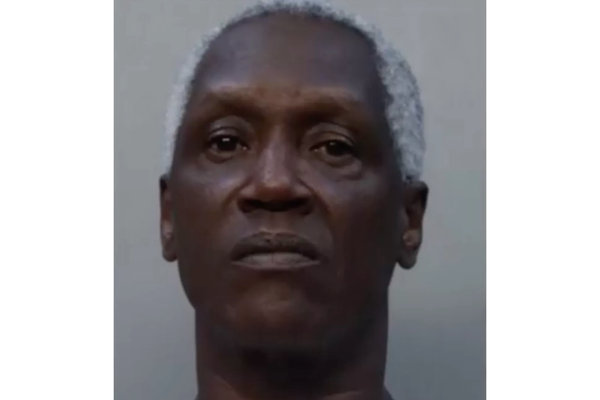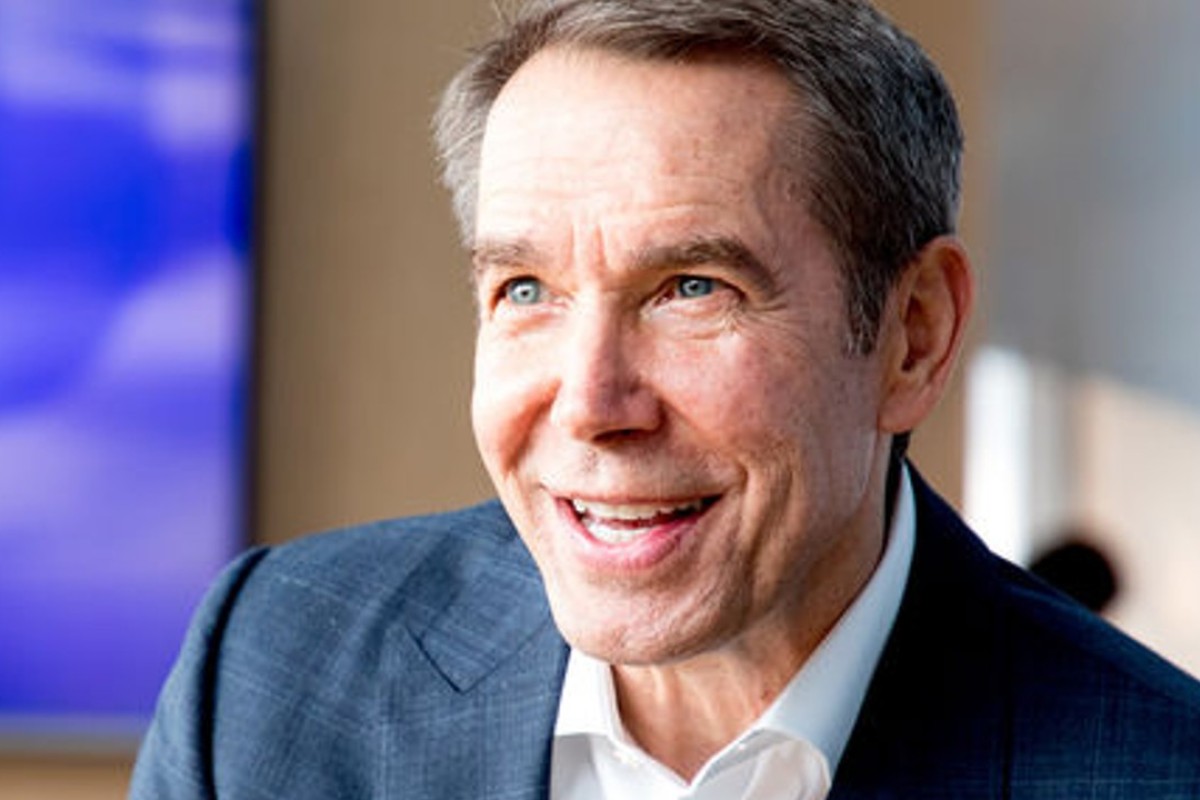
You pass by a particularly shiny window and catch a glimpse of yourself. You may stop to look, fix your hair, maybe even pull your phone out for a quick photo. You may have a moment where you realise you don’t actually look the way you feel that day. Or you might just keep walking, thinking nothing of it. But seeing your reflection, as non-phenomenal as it may seem, is quite the opposite. It’s something which lets you see yourself as an individual in the context of everything around you. It’s an immediate act of self-identity that’s uniquely human, and separates your consciousness from that of animals. It’s also a concept American artist Jeff Koons has spent much of his career exploring.
What to expect at Art Basel Hong Kong 2018: huge installations and provocative discussions
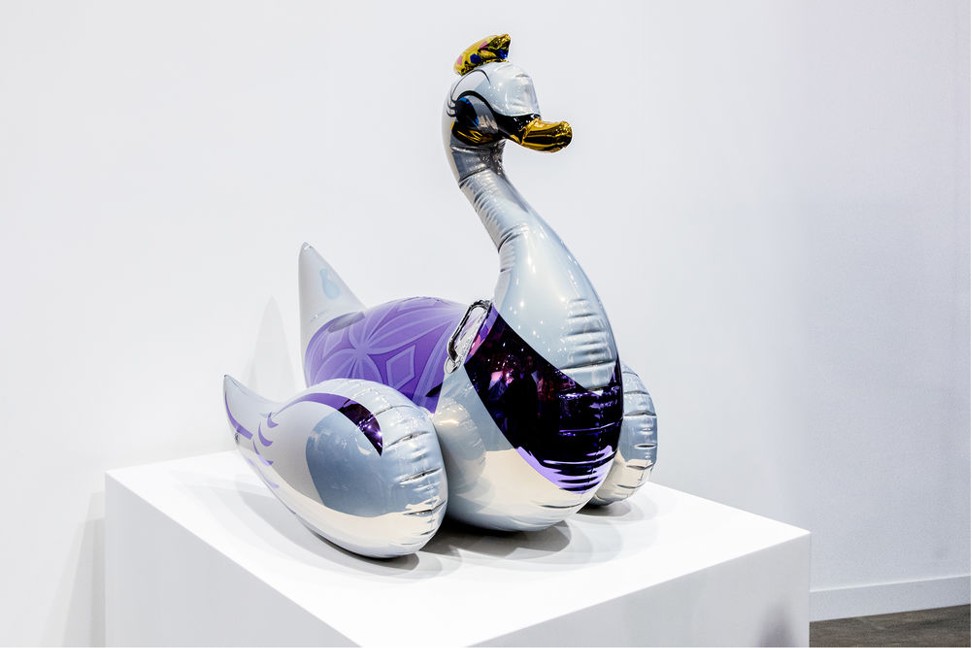
At this year’s Art Basel Hong Kong, each of Koons’ pieces on display at the David Zwirner booth had a reflective element to them. His large scale Bluebird Planter with its many small curves was made entirely from polished stainless steel. Meanwhile, not far from the planter sat an inflatable swan – deceivingly weightless-looking, but also crafted from polished stainless steel.
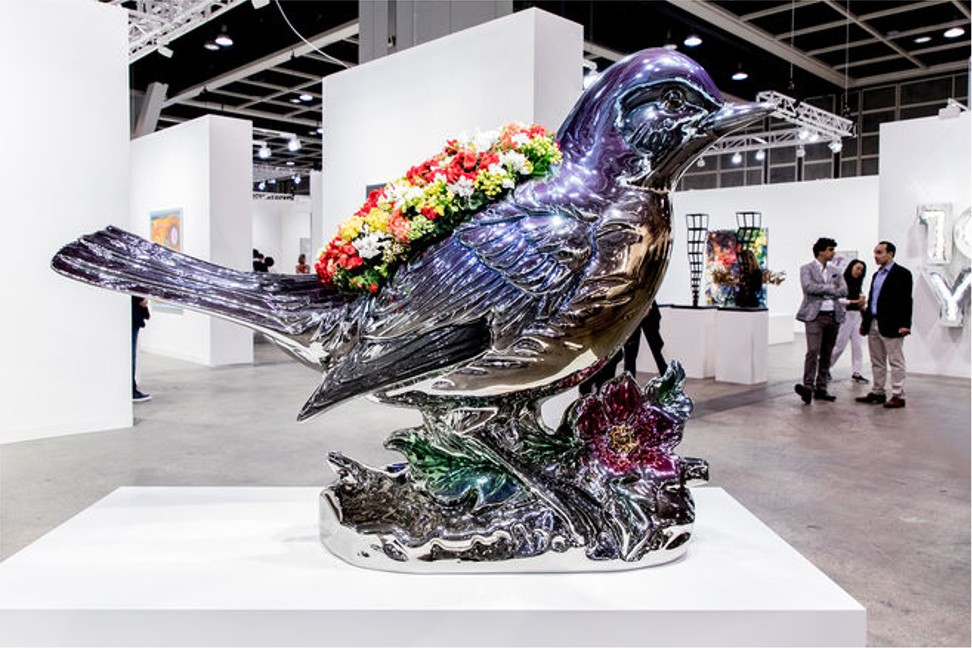
Another look around, and you would catch a distorted reflection of yourself in an impeccable blue gazing ball that’s been thoughtfully suspended in front of a famous Renaissance painting. You’re not sure which painting exactly, but you see yourself standing amid this busy art fair, your image now superimposed onto the image of this historical artwork – the sight of yourself there giving you slight satisfaction.
Local artists find space to shine at Art Basel Hong Kong
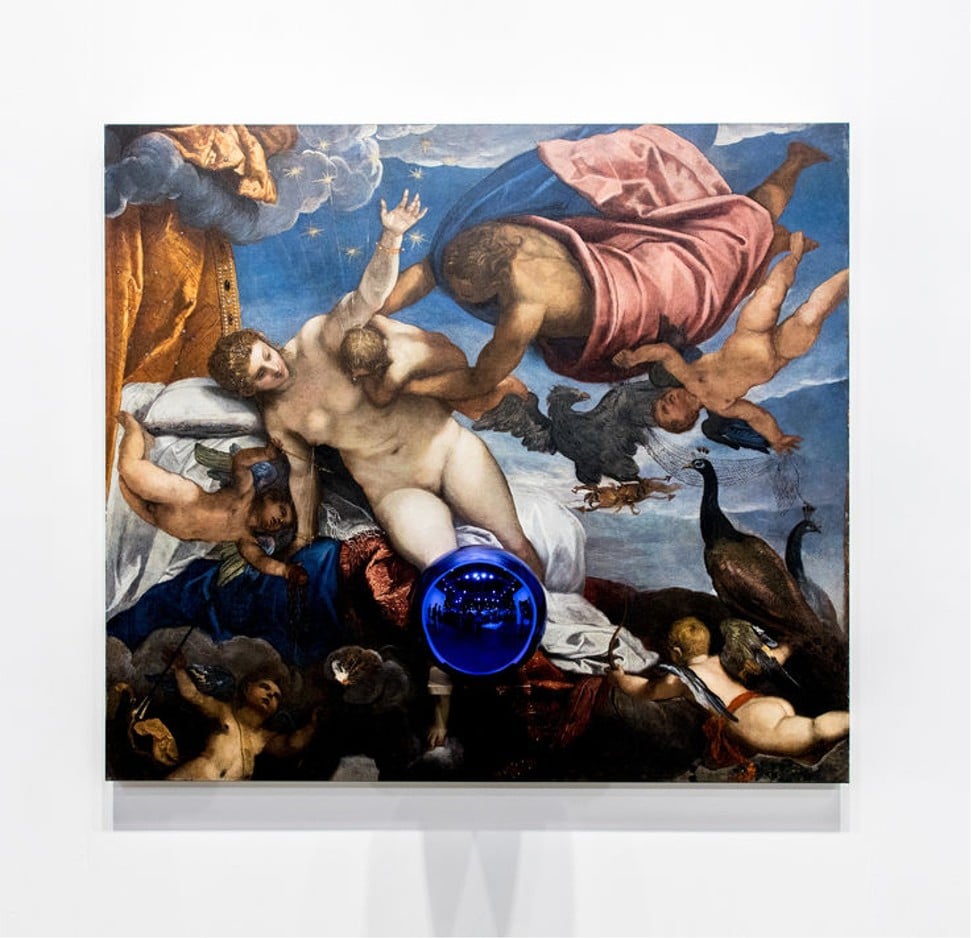
Philosophy and his art
The subject matter of Koons’ work can often be mistaken for frivolous or even superficial at first glance – especially when pieces like Balloon Dog, Play-Doh, String of Puppies, or Michael Jackson and Bubbles draw so heavily on childhood nostalgia, kitsch and pop culture. Despite that, the artist’s work is actually deeply rooted in philosophy.
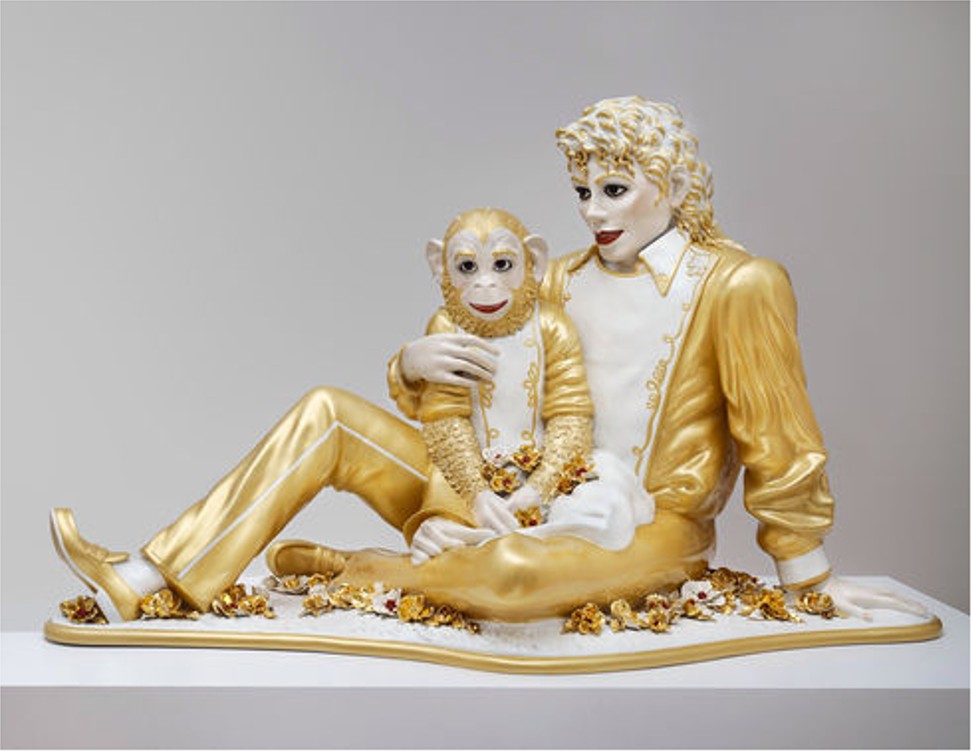
BMW to present Art Car #18 by Cao Fei at Art Basel Hong Kong
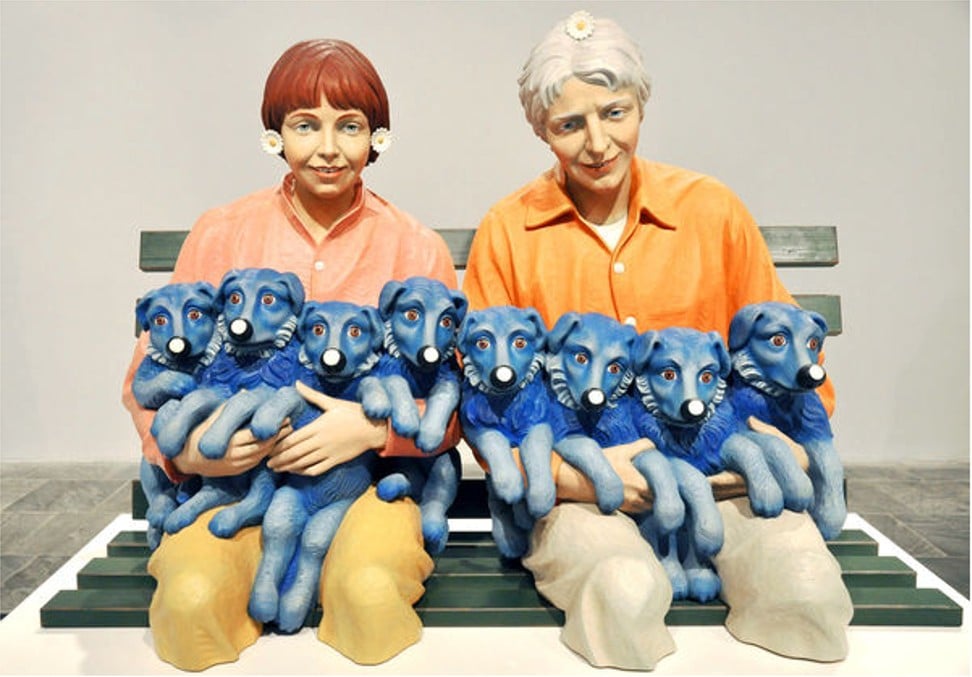
Koon explains: “The word most used in philosophy is ‘reflect’. That’s why I work with a lot of polished mirror surfaces, that’s why the pieces that are here today are here. To be able to reflect on things, is to affirm. Not only is the self affirmed but everything around you, the entire universe becomes affirmed when dealing with the reflective object.”
Still, there are pieces which can be misunderstood as trivial, and for some, would beg the question of low or high art. What distinguishes a sculpture of the Hulk as high art over a drawing of him in a comic book? How is a balloon dog at a birthday party different from a large-scale Koons version – for example, his orange Balloon Dog which sold for US$58.4 million, and set a world record for most expensive piece of art ever sold by a living artist. When asked about whether he believes in the idea of high and low art, and where he might sit on the spectrum of the two, Koons’ response is optimistic.
5 must-see artistic interpretations of luxury during Hong Kong Arts Month
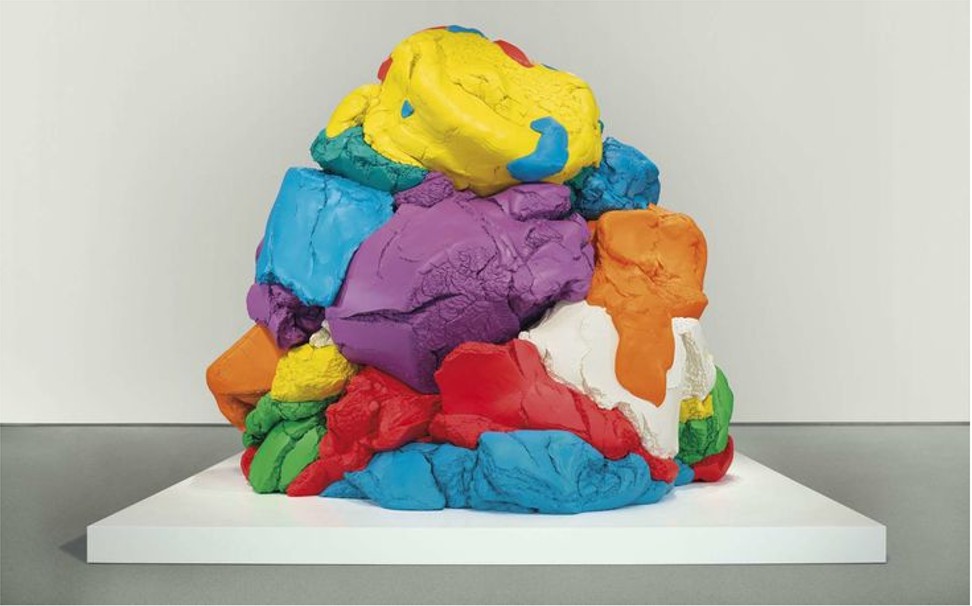
Koon says: “I know there are points of view on low and high art, but I’ve never embraced them. I believe in art and the power of art. And I think the concept of low art is involved with judgment, and segregation. The concept of high art does the same thing. It empowers people to make them feel as though there’s something they must already know before making anything. It uses art to disempower instead of empower.”

Perfection and nature
Looking at some of Koons’ work, it’s easy to take for granted the amount of craftsmanship that goes into producing something so flawless – to manipulate solid titanium to look like soft, malleable Play-Doh in such a convincing way is a huge feat. There’s incredible control over representation and attention to detail, which would lead you to think perfection was something important to him.
But when asked about it, he said it was not.
Four artistic menus on offer in Hong Kong during Art Basel 2017
“It’s like a dog chasing its tail, it doesn’t go anywhere, so I’m not involved in it. But I believe in trying to communicate trust to the viewer. Because at the end of the day, we don’t care about inanimate objects, they’re just a metaphor for people, to communicate the values we have about ourselves and other people.”
The importance he sees in how people communicate or interact with his work is no surprise. For him, a response to art runs on a deeper level – it’s historical, transcendent, metaphysical, natural, genetic.
“Just as any organism responds to its environment, adapts to its environment by changing and transforming, our cultural lives change and transform us. Art is parallel to our biological life, and it changes who we are. I’m very different since I came across Manet; Manet is very different since he came across Goya; and Goya, Velasquez; and Velasquez, the ancient Greeks. And this whole image of human history, it’s real, and the reason for art is transcendence, it’s about reaching higher states of being. So my work embraces that.”
Groundbreaking artists to watch out for this Hong Kong Arts Month
Beauty and art vs porn
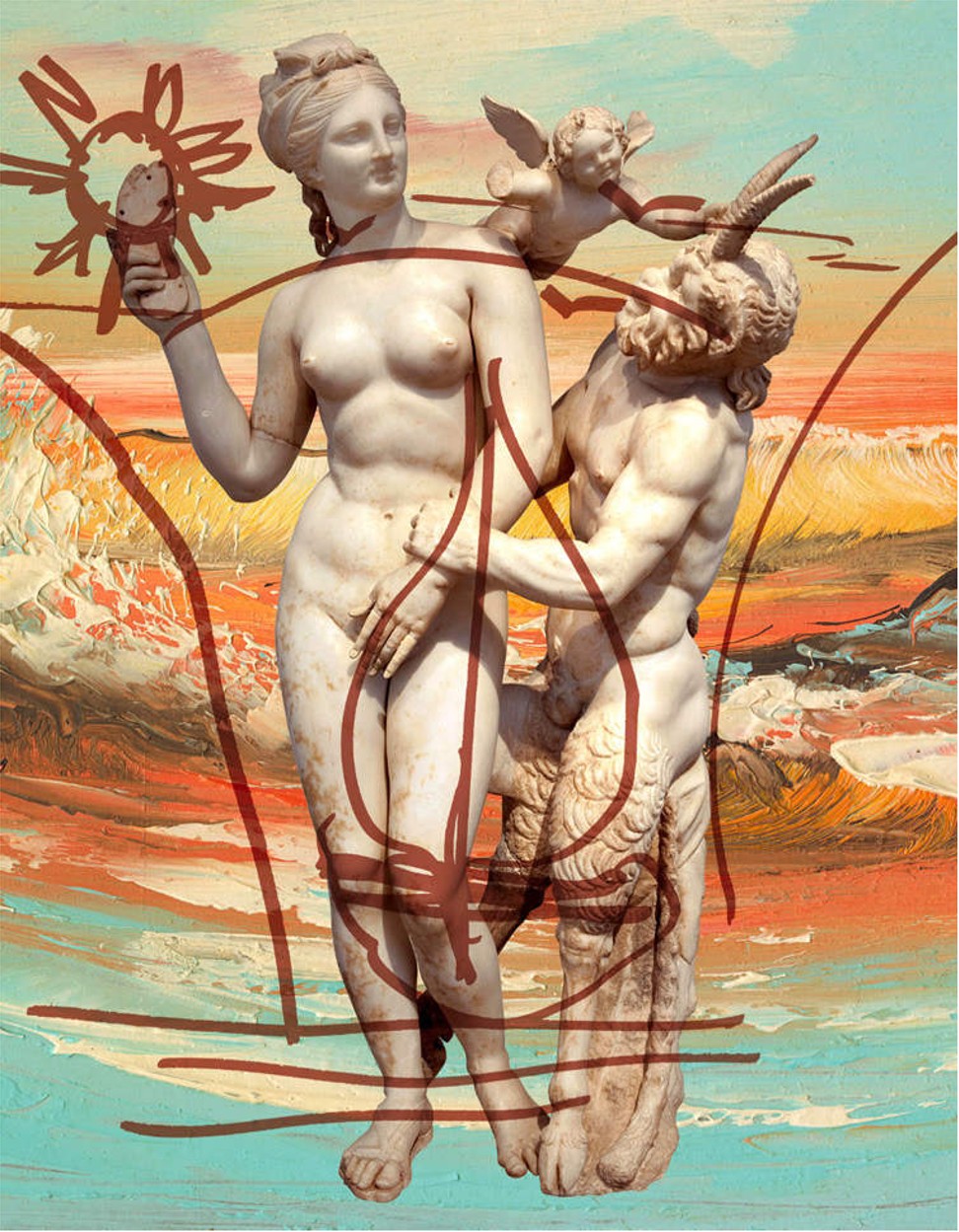
In speaking with Koons so far, he has made it clear that nature plays an important role in his life. When we first sat down to talk, I asked if he could think of the most beautiful thing he’s seen before, to which he answered “If I had to narrow it down to something, it would be organic ... the human body.” His response made more sense later, when we began to talk about the role of eroticism in his work.
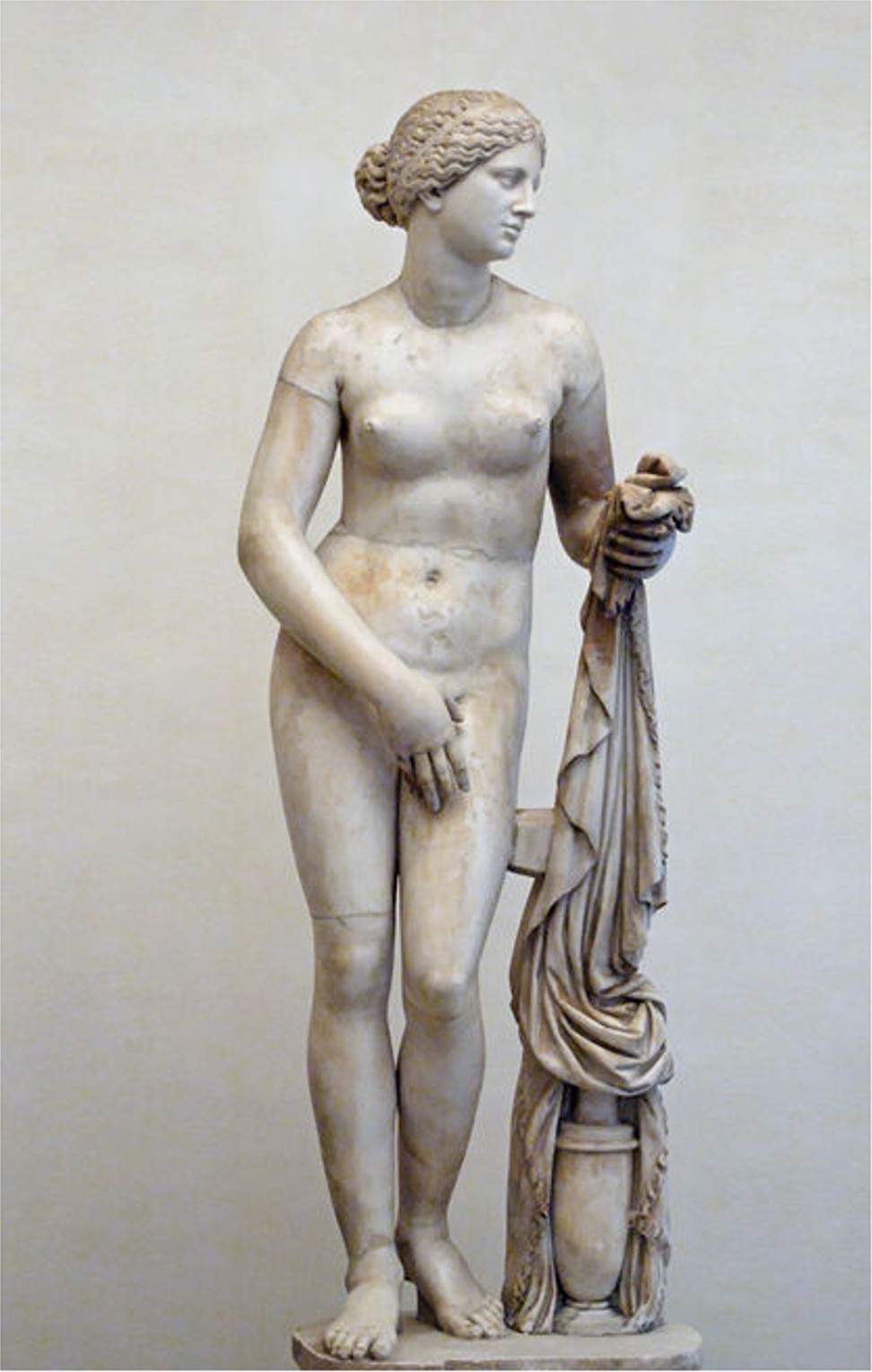
“I love the metaphysical. To me, metaphysics are a connection of the present to the past and to the future. And so I love nature, I love biology, I love the concept of the eternal through procreation and sex. It’s embracing and accepting. There are types of judgments and hierarchies in the world, and people have a hard time accepting their own bodies. So embracing sexuality and nature is one realm of the eternal.”
The best of Art Basel Hong Kong: works and artists to look out for at the fair
The degrees to which Jeff Koons has explored sex throughout his career have ranged drastically. The references have been as subtle as a vase full of flowers which he described to BBC as “very sexual and fertile”; while on the other hand, they’ve been as explicit as his “Made in Heaven” series, which portrayed him having sex with his then wife, the Italian porn-star Ilona Staller through sculpture and photography.
Somewhere between the two extremes, Koons calls on a more subtle, but especially interesting, reference to Classical eroticism. In Antiquity 1, the female statue is modelled after the Aphrodite of Knidos – one of the first life-size female nudes, displaying a level of eroticism from every angle that had never been seen before. Legend has it, the figure was so sexually evocative, one onlooker had tried to rape it leaving an ejaculate stain on the marble. Considering a work of art could produce the same result as pornography – an orgasm – I asked his opinion on whether there was a difference between the two.
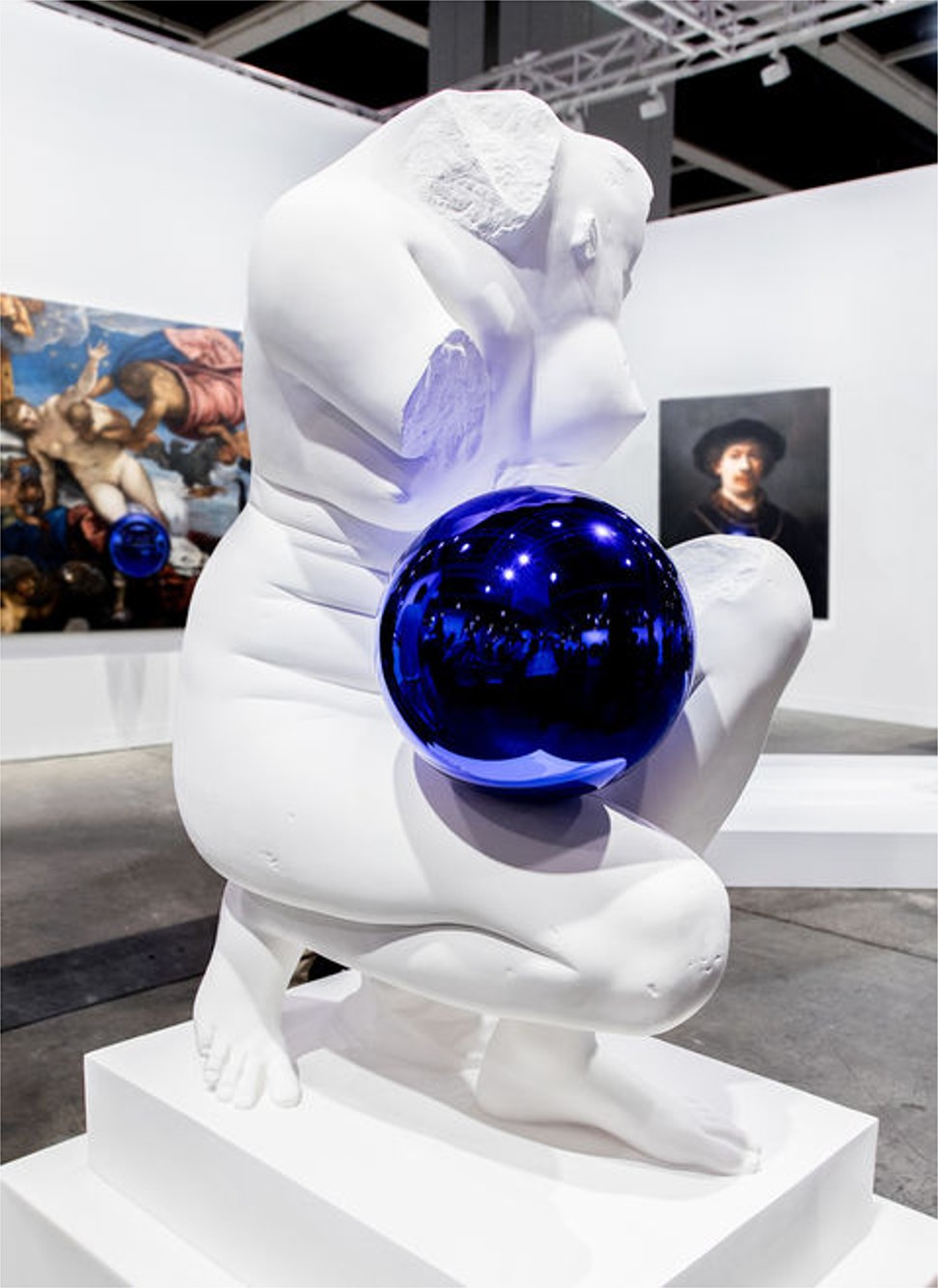
“Pornography deals with looking at a close-up of nature. You could be looking at a close up of a flower, or you can be looking at a close-up of the procreation of the human species; it’s embracing nature. The most important thing whether it’s pornography or art, is acceptance. And when you have acceptance, you can find fulfilment in life and experience transcendence. So pornography is in the same realm as the appreciation of beauty, in that it is the participation of acceptance, of accepting nature, and enjoying the beauty of nature.”
Art fairs are popping up everywhere from Hong Kong to New York – do they make money?
Towards the end of our conversation, Jeff Koons is still sat as upright and composed as he was in the beginning. As we're about to part ways, he leaves us with one last idea that sheds some light on his motivations for making art: “When you create personal iconography you’re able to control your own emotions, your own feelings. It’s a way of creating a drug, your body secretes different hormones. And then you realise not only are you able to control the way you feel, you’re able to control the way other people feel.”
Want more stories like this? Sign up here. Follow STYLE on Facebook, Instagram and Twitter
This story originally appeared in Hypebeast.




